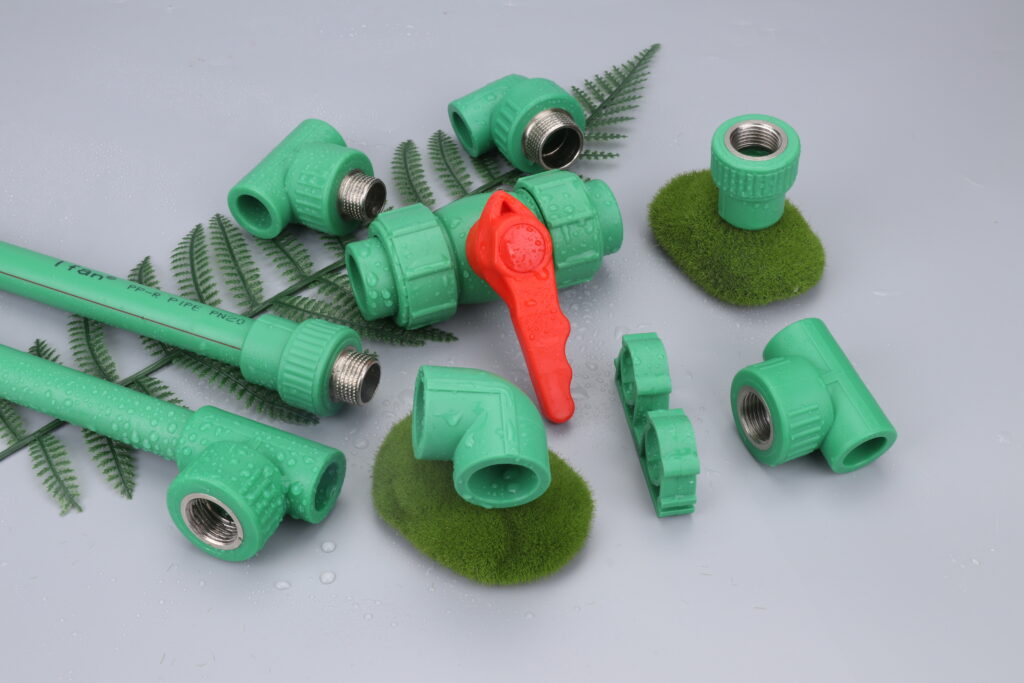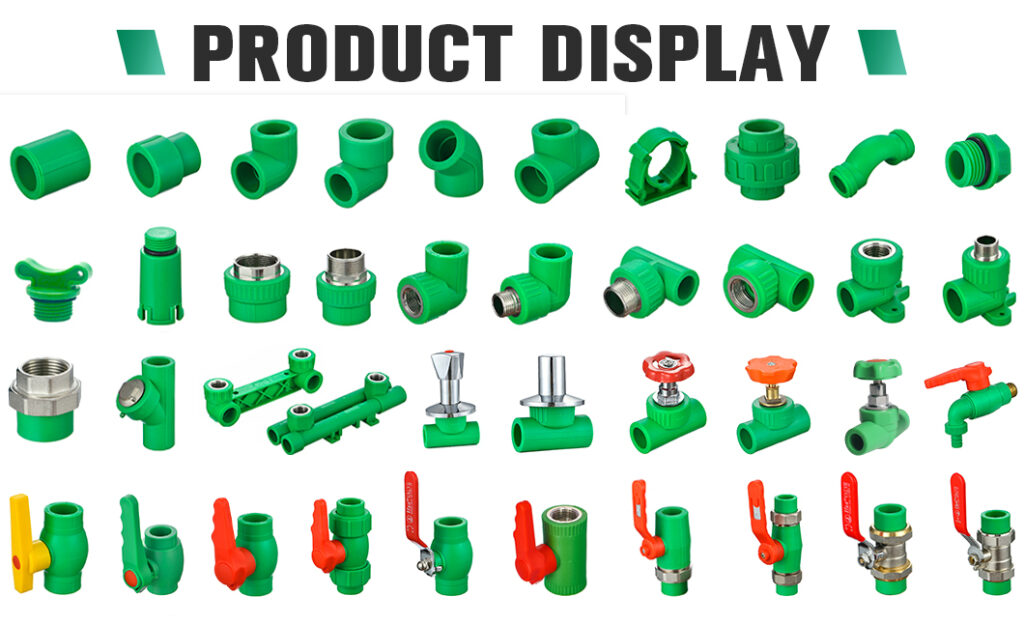PPR (Polypropylene Random Copolymer) pipe fittings are essential components in modern plumbing and fluid conveyance systems. These fittings are known for their exceptional material properties, versatility, and ease of installation. In this article, we will delve into the material composition, advantages, manufacturing processes, connection methods, and applications of PPR pipe fittings.IFAN factory 30+ years manufacture experience support color/size customization support free sample.Welcome to consult for catalog and free samples.This is our Facebook Website: www.facebook.com
Material Composition of PPR Pipe Fittings
PPR pipe fittings are manufactured using a high-quality thermoplastic polymer known as PPR. This material is a type of random copolymer polypropylene, composed of propylene random copolymer and other co-monomers. The material exhibits several key characteristics that make it ideal for pipe fittings:

Advantages of PPR Pipe Fittings
High Temperature Resistance:
PPR pipe fittings can withstand a wide range of temperatures, making them suitable for both hot and cold water systems. They maintain their structural integrity even at elevated temperatures.
Chemical Resistance:
PPR is highly resistant to chemicals, making it suitable for use in various industrial applications where contact with corrosive substances may occur.
Low Thermal Conductivity:
PPR has low thermal conductivity, which means it helps conserve energy by minimizing heat loss in hot water systems.
Smooth Inner Surface:
PPR pipes and fittings have a smooth inner surface, reducing friction and minimizing the risk of clogs and blockages.
Longevity:
PPR pipe fittings have a long service life, often exceeding 50 years, thanks to their durability and resistance to environmental factors.
Ease of Installation:
These fittings are easy to install due to their lightweight construction and simple connection methods, reducing labor costs and installation time.
Manufacturing Process of PPR Pipe Fittings
The production of PPR pipe fittings involves the following key steps:
Raw Material Selection:
High-quality PPR resin is chosen for its purity and consistent properties.
Extrusion:
The PPR resin is melted and extruded into the desired shape, such as elbows, tees, couplings, and adapters.
Cooling and Sizing:
The extruded fittings are rapidly cooled and sized to achieve the correct dimensions and prevent warping.
Quality Control:
Each fitting undergoes rigorous quality control checks to ensure it meets industry standards for dimensional accuracy and material quality.
Packaging:
The finished PPR pipe fittings are packaged and prepared for distribution to customers.

Connection Methods for PPR Pipe Fittings
PPR pipe fittings offer various connection methods, allowing for flexibility and ease of installation:
Heat Fusion:
This is the most common and reliable method. It involves using a special heating tool to melt the ends of the PPR pipes and fittings, creating a seamless and leak-proof joint when they cool and solidify.
Socket Fusion:
Similar to heat fusion, socket fusion uses heat to join PPR pipes and fittings. However, in this method, the pipes and fittings have sockets that fit together, ensuring a snug connection.
Threaded Connections:
Some PPR fittings, such as threaded adapters and plugs, can be connected using standard pipe threads. Thread sealant or Teflon tape may be used to ensure a tight seal.
Applications of PPR Pipe Fittings
PPR pipe fittings have a wide range of applications across various industries, including:
Residential Plumbing:
They are commonly used in residential plumbing systems for hot and cold water distribution, providing a safe and reliable plumbing solution.
Commercial Buildings:
PPR fittings are ideal for commercial properties, including offices, hotels, and hospitals, where consistent water supply and sanitation are essential.
Industrial Applications:
Their chemical resistance makes PPR fittings suitable for industrial processes, such as chemical manufacturing and wastewater treatment.
Agriculture:
PPR fittings are used in agricultural irrigation systems, ensuring efficient water distribution to crops.
Heating Systems:
PPR fittings are often employed in underfloor heating systems due to their excellent heat resistance.
Shipbuilding:
PPR fittings are utilized in the construction of marine plumbing systems, where corrosion resistance is crucial.
In conclusion, PPR pipe fittings are vital components in plumbing and fluid transportation systems, offering numerous advantages such as high temperature and chemical resistance, durability, and ease of installation. Their applications span residential, commercial, industrial, agricultural, and even maritime sectors, making them a versatile choice for various fluid conveyance needs. The manufacturing processes ensure consistent quality and performance, making PPR pipe fittings a reliable choice for modern infrastructure projects.

